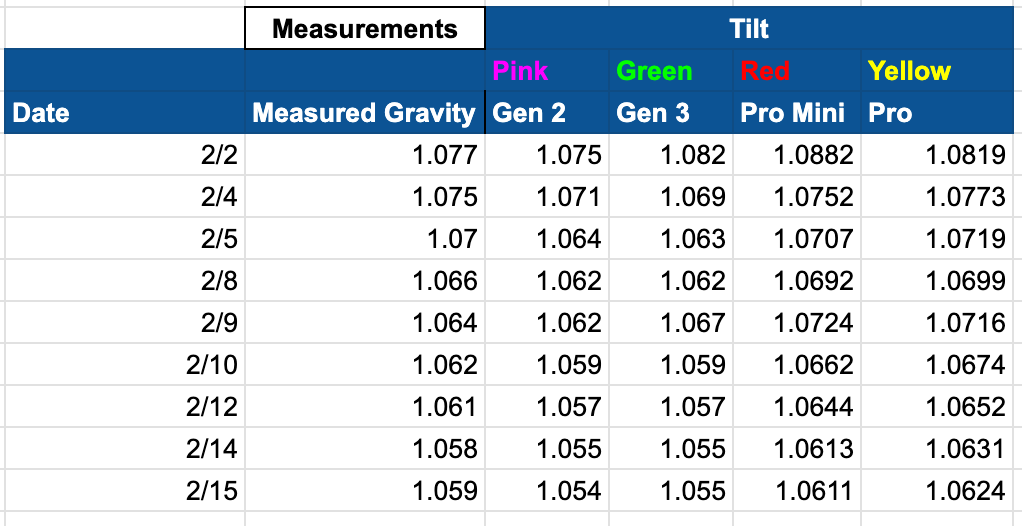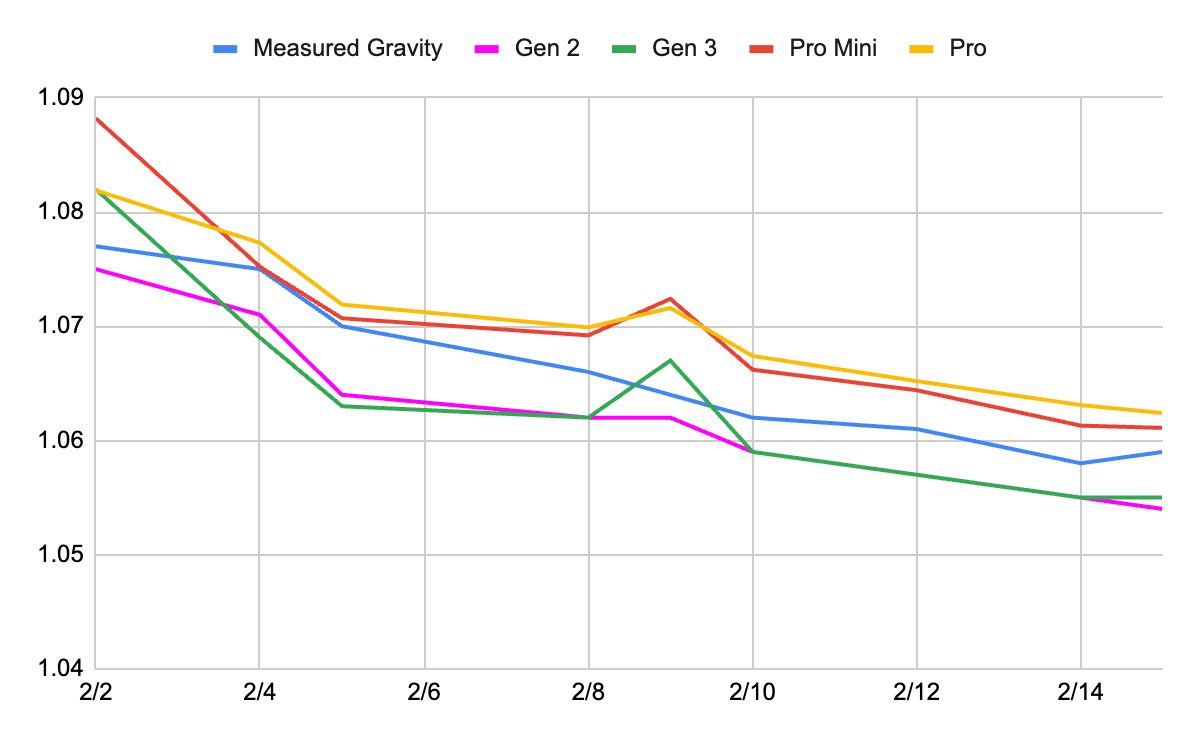Tilt Accuracy Testing - Part 2 (now of 3)
Unfortunately, the Lalvin 71B didn’t end up coming to the rescue as I had hoped, and fermentation remained stubbornly stalled. Lack of nutrients? Probably. Perhaps yeast, like humans, can’t survive on white sugar alone. Regardless—nothing ventured, nothing gained. Time to move on to Plan C.
Before we dive into that, let’s take a look at some data. Below are the readings from the Tilts, along with the gravity measurements I took using my digital hydrometer.
Part 2 Results

Here's what that looks like in chart form. The "Measured Gravity" is the line in the center:

These results are intriguing (especially if we ignore the Feb 9th "spike"). The Gen 2 and Gen 3 models tracked fairly close to one another—both reading below the measured gravity—while the Pro and Pro Mini were also consistent with each other but read higher than the measured gravity. This suggests that some calibration might be beneficial, but that conclusion contradicts what we discovered in Part 1.
What this experiment does reinforce, however, is why Tilt Hydrometers can be incredibly useful. Over two weeks, we saw only a 14-point drop in gravity. If this had been a beer I was brewing, I would have realized by day 4 that something was off compared to expected fermentation progress. That would have given me time to pitch more yeast or make other adjustments before the fermentation stalled completely.
Next - Part 3
If there’s one takeaway from this experiment, it’s that sugar water is just as bad for yeast as it is for humans. Had this been wort, I would have expected a much faster drop in gravity. Instead, fermentation hit a wall. Fortunately, I have a real brew day coming up—my first in the new brewery. While I hadn’t originally planned on it being part of this experiment, it now seems like a great opportunity to continue with Part 3. Stay tuned!